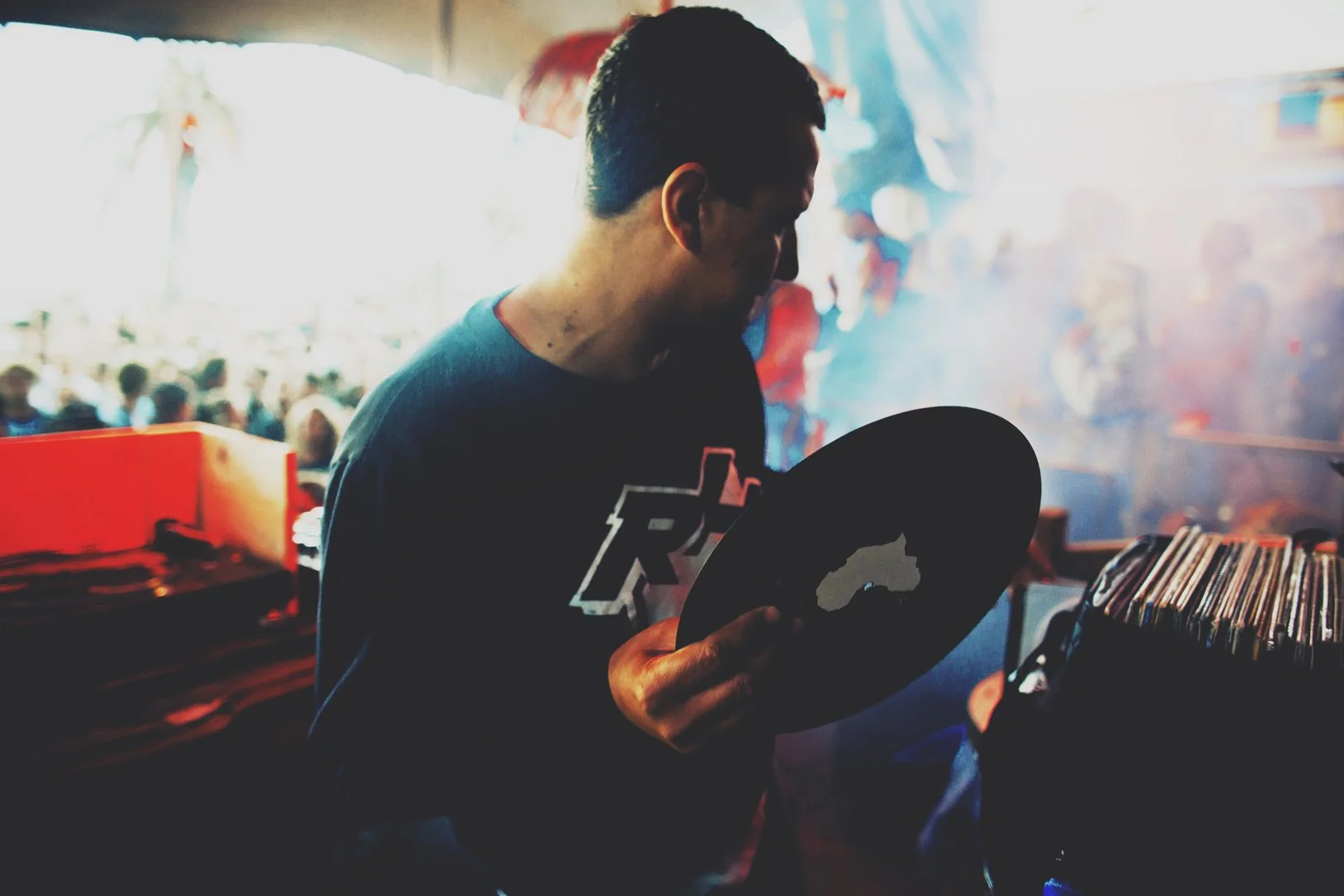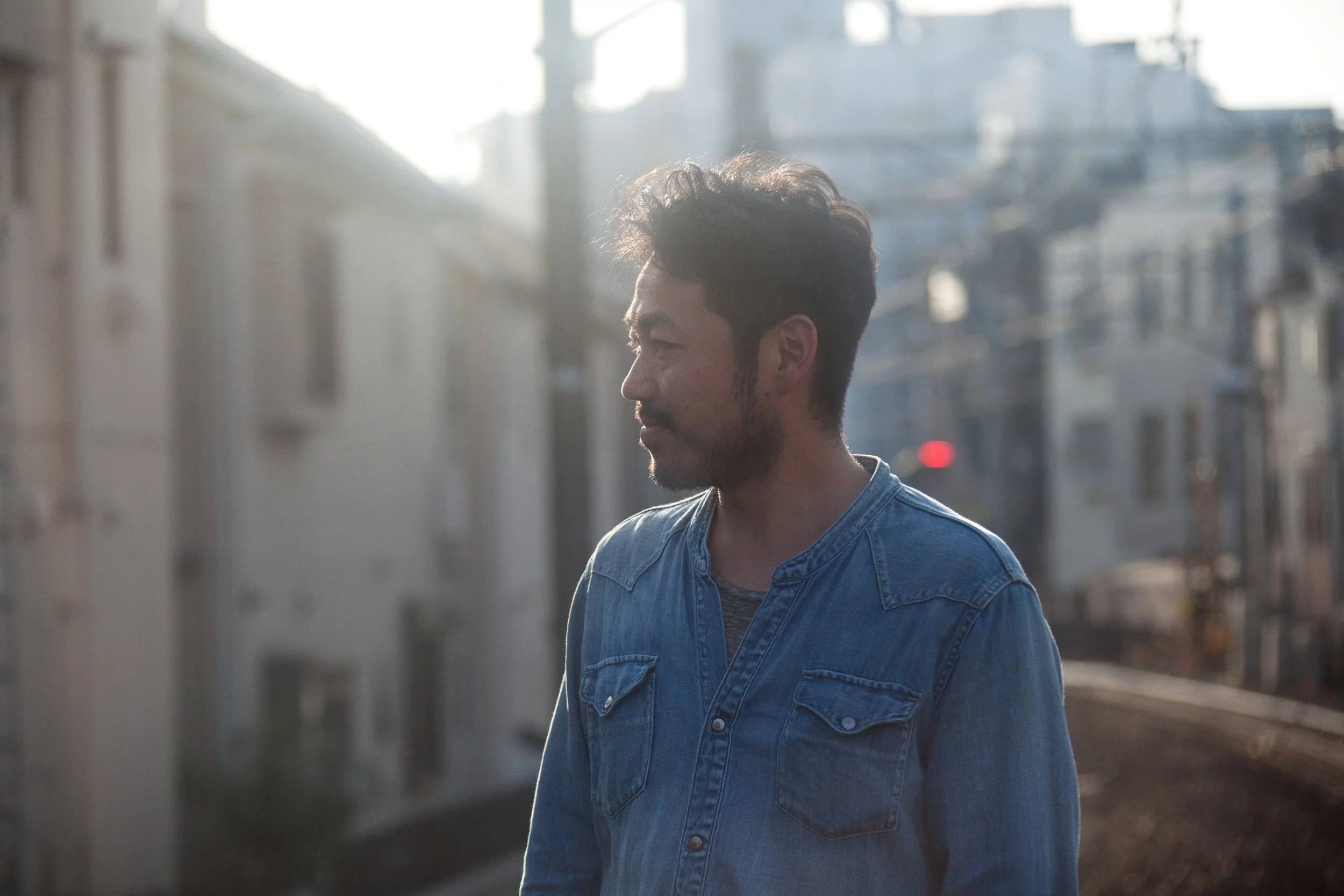Antal Interview: “It’s about curiosity and connection”
Rush Hour, Techno Kayō, and respectful curation
Words by Rocco Universal
“I was just a club kid, you know? I worked in clubs, I heard DJs from America and the UK, and I got so influenced that I wanted to have those records myself. That’s how it started.”
Antal Heitlager sits in his kitchen at home in Amsterdam as he shares his story via Zoom. Over the past two decades, the Rush Hour co-founder has built one of underground music’s most trusted ecosystems — connecting dots between scenes, eras, and continents with equal measures of care and curiosity.
His latest compilation project, Techno Kayō, traces those same lines of connection — this time presenting a selection of formative electronic sounds that are little-known outside of their birthplace. Co-curated with legendary Tokyo-based record dealer and label owner Dubby, the compilation shines a light on Japan’s electronic underground from the ‘80s, when pop, new wave, and experimental sounds converged in futuristic yet deeply human ways.
The compilation captures a time when Japanese artists were reimagining pop and electronic music on their own terms — blending local traditions and sensibilities with new technologies, shaping novel machine sounds which would resonate far beyond Japan’s borders. For Antal, the project represents an ongoing exchange between Amsterdam and Japan, built on shared curiosity, respect, and a love of high-quality sounds.
Antal’s first connection with Japan came in the late ’90s, just as Rush Hour was taking shape. These were the days before the internet had taken hold, and with few local contacts, he and his partners were trying to find a way to get their records into Japanese stores. That initial graft opened a lasting connection — one that would evolve from distribution into lifelong cultural exchange.
He first travelled to the country as part of Recloose’s tour in the early 2000s, serving as warm-up DJ in Tokyo, Kobe, and Kagoshima. “[Recloose’s] agent at the time took us along and did two or three more tours in the years after,” he recalls. “So then, around 2002, 2003, every year we went there. And then at some point it stopped, but we had contacts for Rush Hour as a company, for distribution and stuff, so we went on our own.”
Antal kept returning, each visit strengthening his ties to Japan’s scene. “We went every year for a while,” he says. “And then around 2015, the relationship with Rainbow Disco Club started. Since then, I’ve been going a lot — I play the festival every year and a club show too, usually twice a year.”
He traces how Japan’s dance scene evolved from its early American club influences into something more freeform. “Back then, it was very much adapted from New York culture,” he says. “I think it has a lot to do with labels like King Street bringing lots of Americans to Japan. And the same goes for Detroit and Chicago.”
He paints a vivid picture of the era — clubs like Yellow and its smaller offshoot, Modular, channelling the sound of New York house. “Later on, when you had the West London sound — Dego, Jazzanova, all the jazz dance stuff — they really had a good following there as well.”
Over time, he says, the energy shifted. The big rooms gave way to smaller, more intimate spaces — listening bars and audiophile venues where the focus was on sound and atmosphere rather than dancefloor energy. Amid that change, Rainbow Disco Club emerged as a meeting point for Japan’s underground — a festival that bridges generations and keeps the country’s dance culture connected to its roots.
“Club culture is harder in Japan at the moment than it used to be,” he says. “But Rainbow Disco is a very important movement because they’ve kept one foot in how things were and one pushing things forward. That’s very healthy.”
Wide open and holistic, it’s a spirit Antal connects with instinctively. “They’ve managed to keep that real community feeling,” he says. “You meet people there who really care, who go deep into music. It reminds me of how Amsterdam felt when we started out.”
Dubby
That sense of connection fuels Antal’s friendships in Japan — relationships built slowly, through mutual appreciation rather than business. One of the most enduring is with Ondas founder, Dubby. “Dubby started a store and focused on exporting Japanese records to Europe and the States,” Antal says. “He helped bring attention to music that had been overlooked, making people realise how much depth there was in Japan’s own scene.” Their shared curiosity is what eventually led to the Techno Kayō album, a celebration of Japan’s rich electronic past. “We had dinner and I asked him, shall we take a dive into this music and see if we can compile something? He was into it and sent me a list of tunes. I suggested others, made a selection, and we tried to get licences organised.”
From the neon-lit shimmer of The Peters’ ‘Happy Time’ to the forward-facing playfulness of Kyoko Koizumi’s ‘Microwave’, the record captures a moment when Japan’s pop and experimental worlds blurred, reflecting both futurism and nostalgia.
Japan’s influence on electronic music, Antal notes, runs deeper than most realise — through the sound machines forged in the country and the artists who pioneered them. From Roland’s drum machines and Yamaha’s synthesisers to the futuristic vision of Yellow Magic Orchestra and Ryuichi Sakamoto, Japan helped define the sound of modern dance music, often without taking the credit.
Beyond the futurism lies something nuanced and deeply human. Japan’s complex culture — balancing innovation with rooted tradition and a forensic attention to detail — informs the sound. For Antal, it’s the music’s emotional core that makes it stand out. “You hear it in [Ryuichi Sakamoto’s] ‘Merry Christmas, Mr Lawrence’ — this moody, bluesy, nostalgic feeling. That’s what makes it so special.”
Uncovering and celebrating these stories, he says, is what drove the project. “It’s about curiosity and connection — not taking something and rebranding it, but understanding where it came from and who made it.”
That sensitivity extends to how Antal approaches music from other cultures — an approach refined over time.
“At some point I wanted to play Brazilian music in Amsterdam,” he recalls. “You organise a party, but only Dutch people show up. A few Brazilians come and they’re like, what the hell is going on? This is not a Brazilian party.”
He jokes about where misguided enthusiasm can lead without a mindful approach. “Before you know it, you [could find yourself] wearing a Brazilian jersey, a tropical hat, selling caipirinhas. That’s where I learned how difficult it is to fall in love with music and present it in another time and space.”
He realised that sharing music outside the culture and context it came from can shift perception in unintended ways. “You have to find a way to present the true story of what you appreciate from another culture,” he says. “That’s why it’s important to work with local people who actually experienced it — like Dubby in Japan, or Paolao in Brazil when we did Brazilian compilations.”
For all Rush Hour’s contemporary reach, its story begins in scrappy, DIY style: with a handful of Amsterdam youths trying to get their hands on the music they loved. Even decades ago, the city was a crossroads for music and ideas — a place where house, techno, and hip hop from overseas found appreciative ears. These sounds permeated the local clubs, where visiting DJs from the UK and US brought with them new sounds and possibilities.
“We had a strong import culture,” Antal says. “[The Netherlands is] a small country, lots of music gets imported, and it’s not necessarily direct from our culture. I used to work in clubs, hear American and British DJs, and when I was 16, 17, I got so influenced that I wanted access to those records.”
He smiles as he recalls his first experience hunting for vinyl abroad. “We went on a school trip to London, to Notting Hill Gate — Music and Video Exchange — buying records for one or two pounds, bringing them back, flipping them, earning money so we could buy more. That’s how it started.”
Antal
By his late teens, that enthusiasm was already turning into something more concrete. “We opened the [Rush Hour] store when I was about 19, 20. We were really into the Detroit, Chicago, New York sound, and drum and bass from the UK. We’d go to festivals, buy records, bring them back and sell them.”
Today, it would be easy to imagine that Antal’s musical knowledge was there from the start — when, in fact, it was earned, record by record.
“When I opened the store, I didn’t even know who Roy Ayers was,” he laughs.
Rush Hour began as a way to share music, and soon became a place to learn. The shop became a cultural nerve centre where DJs, producers, and dancers swapped ideas as much as records — a community-led resource built on conversation. “We evolved through communication with customers,” he says. “People would come in and say, ‘Hey, you know this record?’ or ‘You know that one?’ We talked about music every day — that’s how you learn.”
The spirit of exchange and exploration helped shape not only the label’s identity but also the sound of Amsterdam’s nightlife. “The programmer from [local club] Paradiso came by,” he recalls. “He saw we approached house music in a soulful way — almost like hip hop — and he got back into house music because of that. Then we started doing nights at Paradiso, bringing people like Theo Parrish, Moodymann, Joe Claussell. They would influence us again.”
This symbiotic feedback loop between local and global scenes remains one of Rush Hour’s defining traits. Record store, label, distributor, creative hub — it’s hard to overstate its influence on the discerning end of today’s dance spectrum. It’s harder still to name other imprints that match its output in presenting both new and archival sounds.
Part of what made Amsterdam fertile ground for this kind of culture to flourish was its anything-goes attitude. The city was, even back then, imbued with a sense of creative freedom that shaped Antal’s taste. “You had a DJ like Aardvarck, from Rednose District, always playing at squatted places,” he says. “He was really all over the place — he’d play DJ Rush, then Lionel Richie, then Motorhead.”
He laughs. “That was really an Amsterdam style of playing — just play everything. D’Angelo, Slum Village, deep underground stuff, Chicago stuff, hard rock — everywhere, really. Rednose District had a big movement of alternative people who were into that, so we just got exposed to a lot of different things.” That openness — a willingness to embrace disparate styles and scenes — would become the foundation for everything Rush Hour did, and soon extended far beyond Amsterdam itself.
As Rush Hour continues to evolve, Antal’s focus remains on presenting quality above all else.
“We always choose the music first. If we made more commercial choices, Rush Hour would sound very different.”
Buy Techno Kayō Vol. 1 – Japanese Techno Pop 1981–1989 (compiled by Dubby & Antal)




